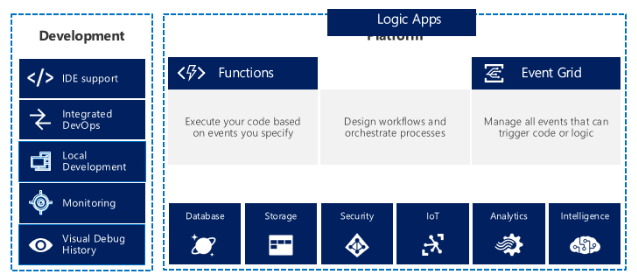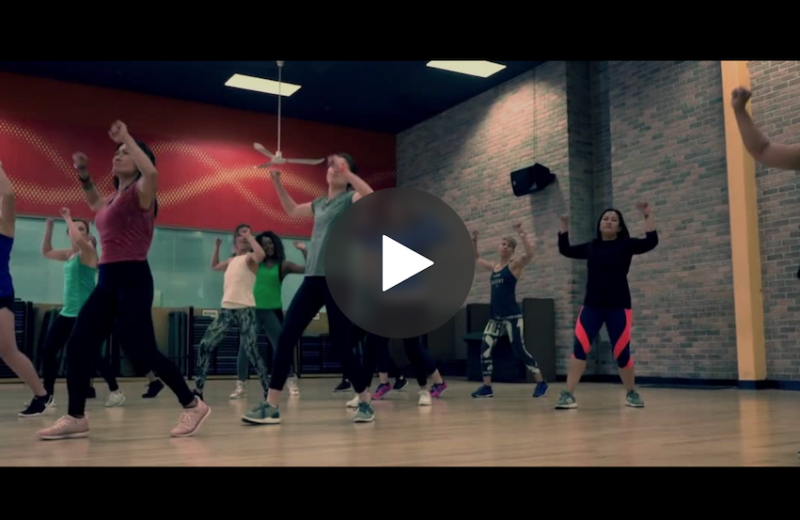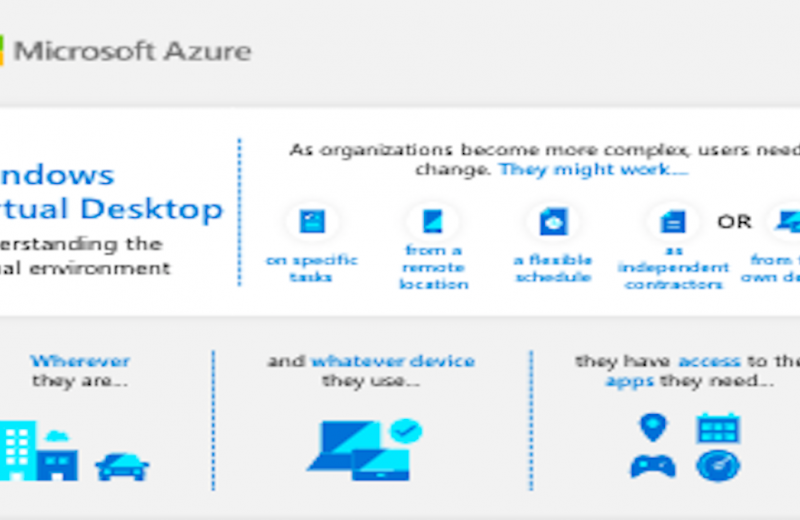Let’s talk about what really makes up Microsoft Serverless platform. At the center of the Serverless platform, is our compute offerings, Azure Functions and Azure Logic Apps. Azure Functions is an event based Serverless compute that helps you to accelerate your development. Logic Apps is a powerful orchestration tool to enables building a Serverless app in a minute – by orchestrating multiple functions using a visual workflow tool.
Say you have your apps are up and running using Serverless. Congratulations! You currently need to collect intelligence from completely different apps across platforms to require actions upon. There are some essential elements that we expect are core to building Serverless applications are:
- Data/ Storage –Functions has triggers and bindings with Azure document DB and Azure Blob storage,
- Triggers: Triggers are event responses used to trigger your custom code. They allow you to respond to events across the Azure platform or on premise.
- Bindings: Bindings represent the necessary meta data used to connect your code to the desired trigger or associated input or output data.
- Messaging such as queues and topics using Azure Service Bus and Azure Event Hubs.
- Integration that includes core Line of Business (LOB) apps and SaaS apps integration via Azure Logic Apps.
- Intelligence on data and sentiment/ predictive analysis using cognitive services and Machine learning
- Conversation as a service – how do we equip developers to create apps that offer an end-to-end experience for their end users – Azure bot Service offers a Serverless interactive bot experience.
Most of the developers are spending more time to writing the code that allows them to add huge business impact with Serverless. MSFT offers numerous development tools such as IDE Support for Visual Studio in functions and Logic Apps to enable local development (vs browser coding environment), visual debugging capability, all with your choice of tools.

Lastly, I also want to highlight top scenarios and use cases for Serverless:
-
Real-time Stream analytics:
Customers can use Functions to feed real-time streams {of data|of knowledge|of information} from application tracking into structured data and store it in SQL on-line.
-
SaaS event processing:
Customers can use Functions and Logic Apps to research data from an excel file in OneDrive and perform validation, filtration, sorting and convert data into consumable business charts
-
Web app architecture:
Used a lot in creating targeted marketing collaterals – when a customer clicks on a webpage, it triggers a webhook, that uses a function to create and that matches the customer profile and displays a completed webpage.
-
Real-time bot messaging:
when customers send a message to a chat box, Functions calls Cortana analytics to generate appropriate answers and sends a response back.
Customers have completely different methods to build a Serverless app – start by building the distributed application parts using functions by leverage the various templates and declarative bindings Or Start with the work flow and orchestration of Serverless application using Azure Logic Apps. The visual designer enables developers to quickly and simply author, edit and visualize orchestration of multiple functions and workflow.




















